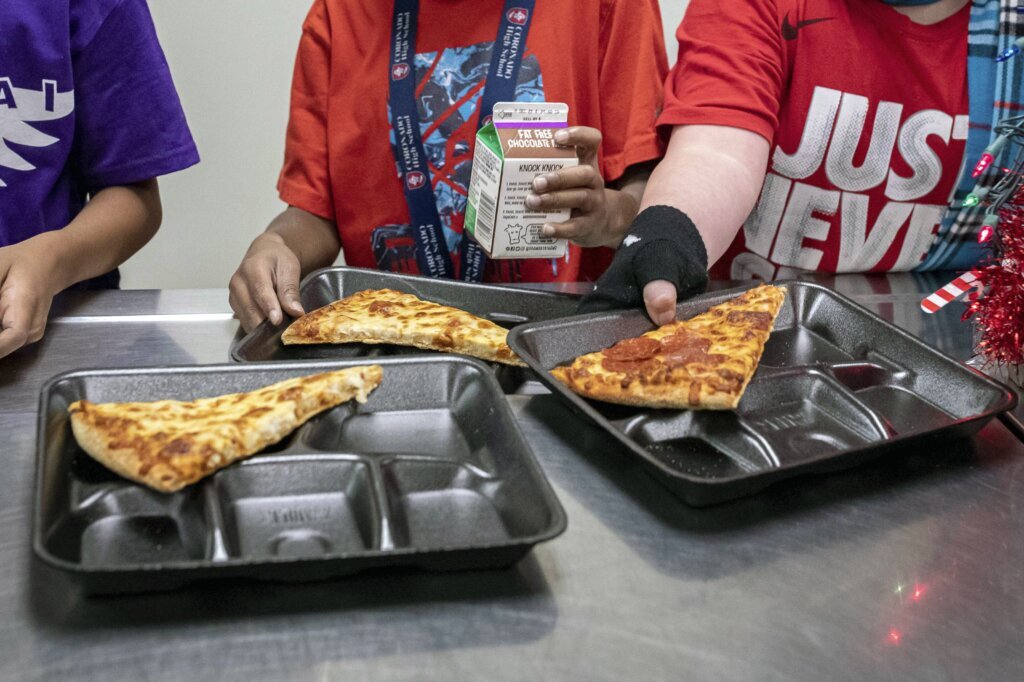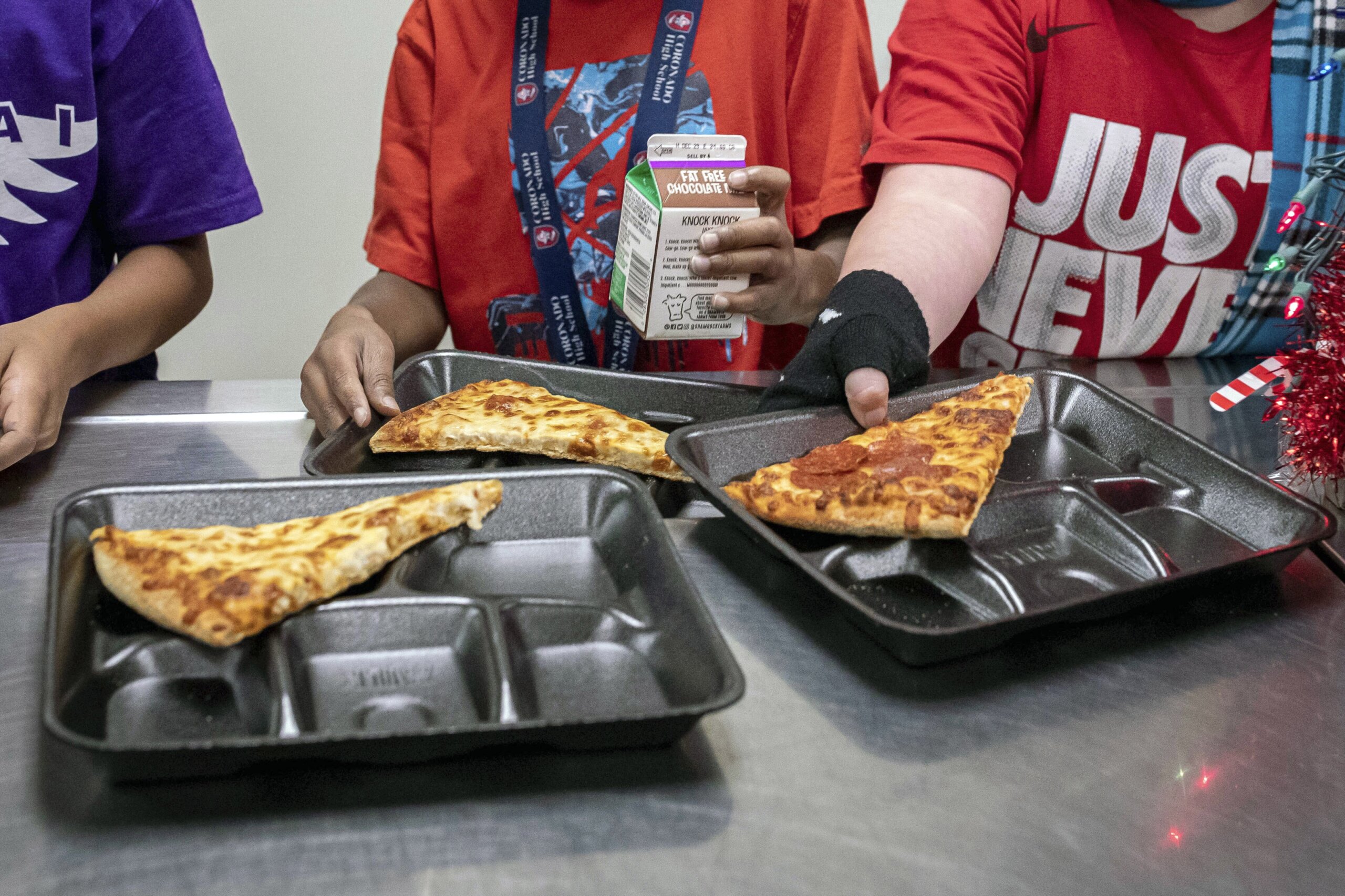
U.S. agriculture officials on Friday proposed new nutrition standards for school meals, including the first limits on added sugars, with…
U.S. agriculture officials on Friday proposed new nutrition standards for school meals, including the first limits on added sugars, with a focus on sweetened foods such as cereals, yogurt, flavored milk and breakfast pastries.
The plan announced by Agriculture Secretary Tom Vilsack also seeks to significantly decrease sodium in the meals served to the nation’s schoolkids by 2029, while making the rules for foods made with whole grains more flexible.
The goal is to improve nutrition and align with U.S. dietary guidelines in the program that serves breakfast to more than 15 million children and lunch to nearly 30 million children every day, Vilsack said.
“School meals happen to be the meals with the highest nutritional value of any meal that children can get outside the home,” Vilsack said in an interview.
The first limits on added sugars would be required in the 2025-2026 school year, starting with high-sugar foods such as sweetened cereals, yogurts and flavored milks.
Under the plan, for instance, an 8-ounce container of chocolate milk could contain no more than 10 grams of sugar. Some popular flavored milks now contain twice that amount. The plan also limits sugary grain desserts, such as muffins or doughnuts, to no more than twice a week at breakfast.
By the fall of 2027, added sugars in school meals would be limited to less than 10% of the total calories per week for breakfasts and lunches.
The proposal also would reduce sodium in school meals by 30% by the fall of 2029. They would gradually be reduced to align with federal guidelines, which recommend Americans aged 14 and older limit sodium to about 2,300 milligrams a day, with less for younger children.
Levels would drop, for instance, from an average of about 1,280 milligrams of sodium allowed now per lunch for kids in grades 9 to 12 to about 935 milligrams. For comparison, a typical turkey sandwich with mustard and cheese might contain 1,500 milligrams of sodium.
Health experts say cutting back on sugar and salt can help decrease the risk of disease in kids, including obesity, diabetes, high blood pressure and other problems that often continue into adulthood.
The plan, detailed in a 280-page document, drew mixed reactions. Katie Wilson, executive director of the Urban School Food Alliance, said the changes are “necessary to help America’s children lead healthier lives.”
But Diane Pratt-Heavner, spokeswoman for the School Nutrition Association, a trade group, said school meals are already healthier than they were a decade ago and that increased regulations are a burden, especially for small and rural school districts.
“School meal programs are at a breaking point,” she said. “These programs are simply not equipped to meet additional rules.”
Vilsack emphasized that the plan phases changes in over the next six years to allow schools and food manufacturers time to adjust to the new standards. He said in a press conference Friday that the USDA will also fund grants of up to $150,000 to help small and rural schools make the changes.
“Our hope is that many school districts and food providers accelerate the timeline on their own,” he said.
Courtney Gaine, president of the Sugar Association, said the proposal ignores the “many functional roles” sugar plays in food beyond sweetness and encourages the use of sugar substitutes, which have not been fully studied in children. Sugar substitutes are allowed under the new standards, Vilsack said.
As part of the plan, agriculture officials are seeking feedback about a proposal that would continue to require that 80% of all grains offered in a week must be whole grains. But it would allow schools to serve non-whole grain foods, such as white-flour tortillas, one day a week to vary their menus.
Another option suggests serving unflavored nonfat and lowfat milk to the youngest children and reserving chocolate and other flavored milks for high school kids.
A 60-day public comment period on the plan opens Feb. 7.
Shiriki Kumanyika, a community health expert at Drexel University’s Dornsife School of Public Health said if they’re done right some of the changes will be hard for kids to notice: “They’ll see things that they like to eat, but those foods will be healthier,” she said.
___
This story has been corrected to fix the spelling the president of the Sugar Association. It is Courtney Gaine, not Courtney Gaines.
___
AP Videojournalist Shelby Lum and AP Science Writer Maddie Burakoff contributed to this report.
___
The Associated Press Health and Science Department receives support from the Howard Hughes Medical Institute’s Science and Educational Media Group. The AP is solely responsible for all content.
Copyright
© 2023 The Associated Press. All rights reserved. This material may not be published, broadcast, written or redistributed.
Stay connected with us on social media platform for instant update click here to join our Twitter, & Facebook
We are now on Telegram. Click here to join our channel (@TechiUpdate) and stay updated with the latest Technology headlines.
For all the latest Health & Fitness News Click Here

